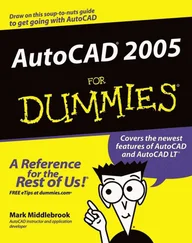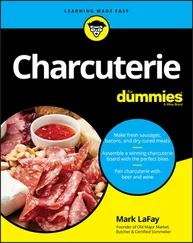Today, two types of representative democracies exist: parliamentary democracy and presidential democracy.
Parliamentary democracies are very common in Europe and also found in Australia and New Zealand. Germany and Great Britain are the two major examples of parliamentary democracies. In a parliamentary democracy, the people don’t vote for their executive, be it a prime minster or chancellor, directly; instead, they vote for a member of a legislature. The legislature then selects the executive. It’s usually the majority political party that gets to select the executive. The following diagram shows how parliamentary democracy works in Great Britain:

Parliamentary systems tend to be dominated by the executive. The British prime minister has to have a majority in parliament and controls his political party with an iron fist (see Chapter 6). Instead of having separation of power and checks and balances between the legislature and the executive, there exists a fusion of power, where the two branches of governments are intermixed. All power is in the hands of the executive.
For this reason, it’s easy to pass legislation, and parliamentary systems tend to respond quickly to the public’s wishes for new policies.
Presidential democracies are common on the American continents and are also found in a few European countries such as France. In a presidential democracy, the concept of separation of powers exists. The two institutions, the legislature and the executive, are elected separately and constantly check each other. So citizens vote twice, once for the president (executive) and once for the legislature. In the U.S., the voters select the president and members of Congress separately. The following diagram shows the presidential system in the U.S.

As the diagram shows, the two structures are independently elected by the people and share powers when it comes to policy making. This in turn results in a system of checks and balances between the two. Presidential systems take longer to bring about political change, because two institutions have to implement them. Overall, this brings about moderate change.
As the term implies, in a totalitarian state, the government exercises total control over its citizens. The government controls the social, political, and economic aspect of a person’s life, and the person enjoys no freedoms whatsoever. Totalitarian regimes are rare in history. The two most prominent governments that qualify being called totalitarian are Nazi Germany (1933–1945) and Stalinist Russia (1929–1953). See Figure 4-1.
At the same time, there were many dictatorships and monarchies that restricted people’s freedoms, but none of them was able to become totalitarian in nature. What makes a government totalitarian? To qualify as totalitarian, a government has to control all aspects of a person’s life and meet the following six characteristics:
One-party state: There has to be one major political party that controls all aspects of not only the government but also a person’s life. It’s the only legal party, and people have to join it to advance politically or economically in a totalitarian society. No opposition parties are tolerated.Source: (a) Wikimedia Commons; (b) Library of Congress FIGURE 4-1:Adolf Hitler of Germany (a) and Joseph Stalin of Russia (b) were leaders of former totalitarian governments.In Germany, the National Socialist Workers Party (NSDAP) fulfilled this role, while in the Soviet Union, the Communist Party of the Soviet Union (CPSU) had a similar role. Citizens joined the party at a young age and were being consistently indoctrinated throughout their lives. The party was there at every stage of their lives. The Hitler Youth in Germany and the Young Octobrists in the Soviet Union are examples of such youth political party organizations. Children were not just politically indoctrinated but were also taught how to fight and show extreme devotion to the totalitarian leader. These party organizations became like second families to many children. They spent weekends with the party, not their families, made friends in the organizations, and often would find their future spouse at party events. Later, when becoming adults, children would join the regular party.
One dominant ideology: One ideology explains political and economic life to the average citizen. This ideology justifies why government is in power and why certain leaders are all-powerful. The ideology further lays out the economic structure of the country and even explains its foreign policy. Chapters 16and 17look at both fascism and communism and how the two were used to justify Stalin’s and Hitler’s rule. The average citizen is indoctrinated with this ideology throughout life. Political party organizations at all levels of life will familiarize citizens with the ideology. In addition, educational structures, including universities, will teach the ideology, and it permeates all aspects of the media.
Total control over the media: Government has to fully control all aspects of the media. This includes television, the radio, and newspapers. No news from nonapproved government sources can enter the country, and the population can have access to only government-approved news. The average citizen is allowed to know only what the government wants him to know. The government controls not only the news but also education, the arts, and even movies. Everything a citizen sees is government-approved. In both the Soviet Union under Stalin and Hitler’s Germany, the government did exercise total control of the media. It was virtually impossible for the average German or Russian to get information that wasn’t biased or government-controlled.Today, it has become a lot tougher to control the media, which now includes the Internet and social media. With globalization (see Chapter 13), it has become virtually impossible to totally isolate a population and control its access to other news sources.
Control over the police: Government has to not only control the regular police to maintain law and order but also establish a secret police to control its population. This secret police has to instill a culture of fear into the average person so that he won’t question or turn against the regime. Everybody in the country needs to know the kind of punishment he’ll face if he questions or turns against the regime. Both the NKVD in the Soviet Union and the Gestapo in Germany performed this function. Mass killings and torture of dissidents was common, and every Russian and German knew the punishment for opposing the regime. In turn, opposition to both totalitarian regimes was minimal.
Control over the military: History has shown that most dictators are toppled by their own militaries. Control over the military is difficult to accomplish in most authoritarian regimes, even monarchies. In a totalitarian society, it’s different because the military is brought under the total control of the regime.In the Soviet Union, Stalin executed almost all his officer corps during the Great Purges in the 1930s to bring the military under his control. This assured him total loyalty of the military.In Germany, Hitler struck a deal with the military, eliminating the socialist wing of his national socialist party, which in turn led the German military leadership to acquiesce to his rule. Later, a force separate from the military was created to assure that in the event the military turned against Hitler, there would be another military branch to protect him. This was the infamous SS.In both countries, within a few years of totalitarian rule, the military lost its independence and became a tool of the ruling regime.
Читать дальше














